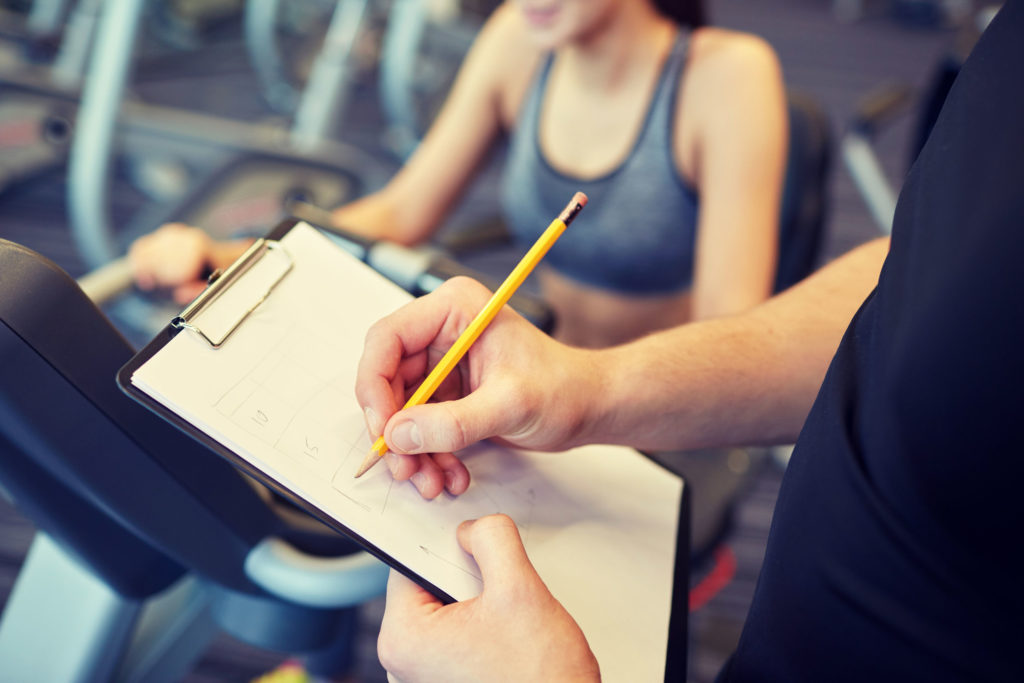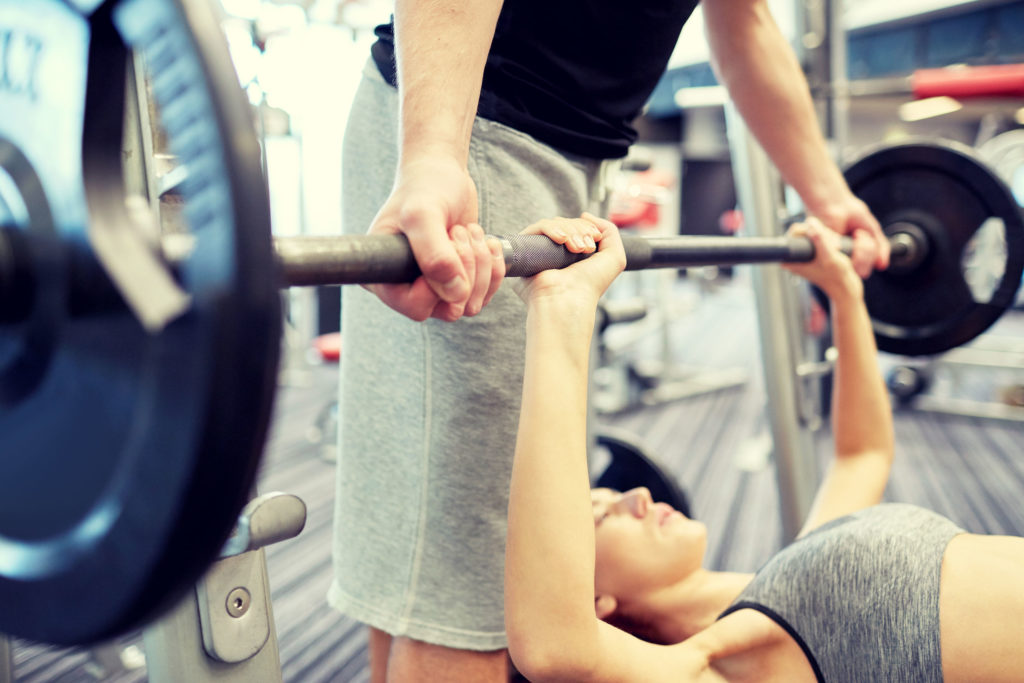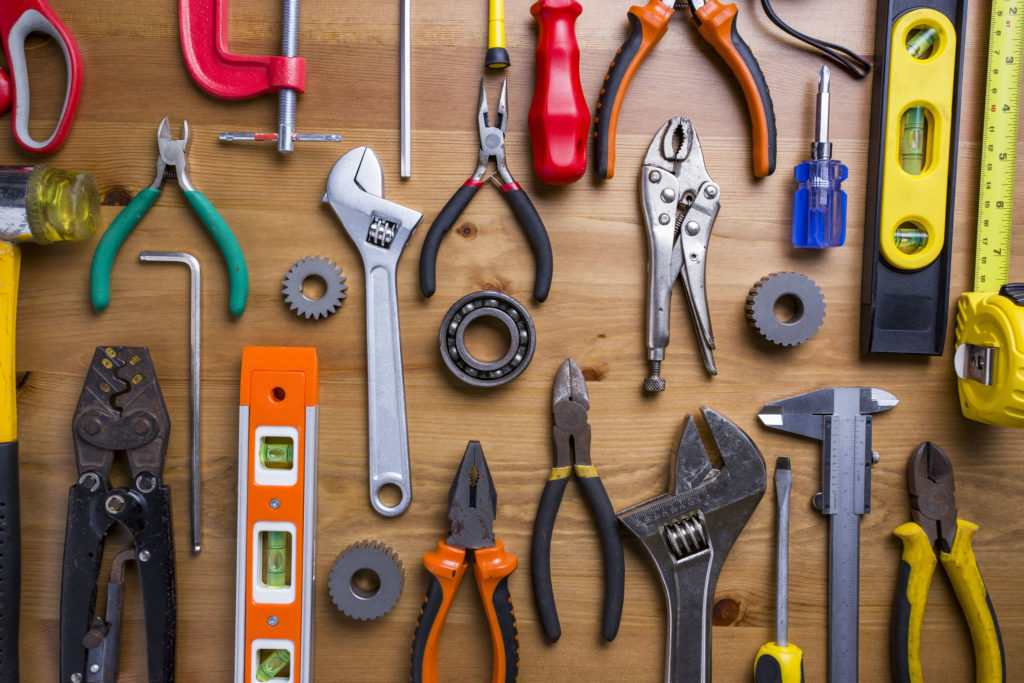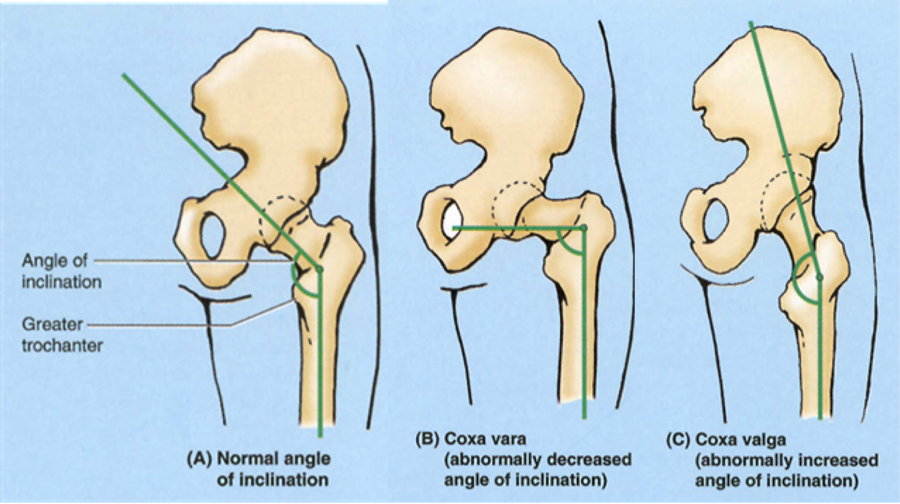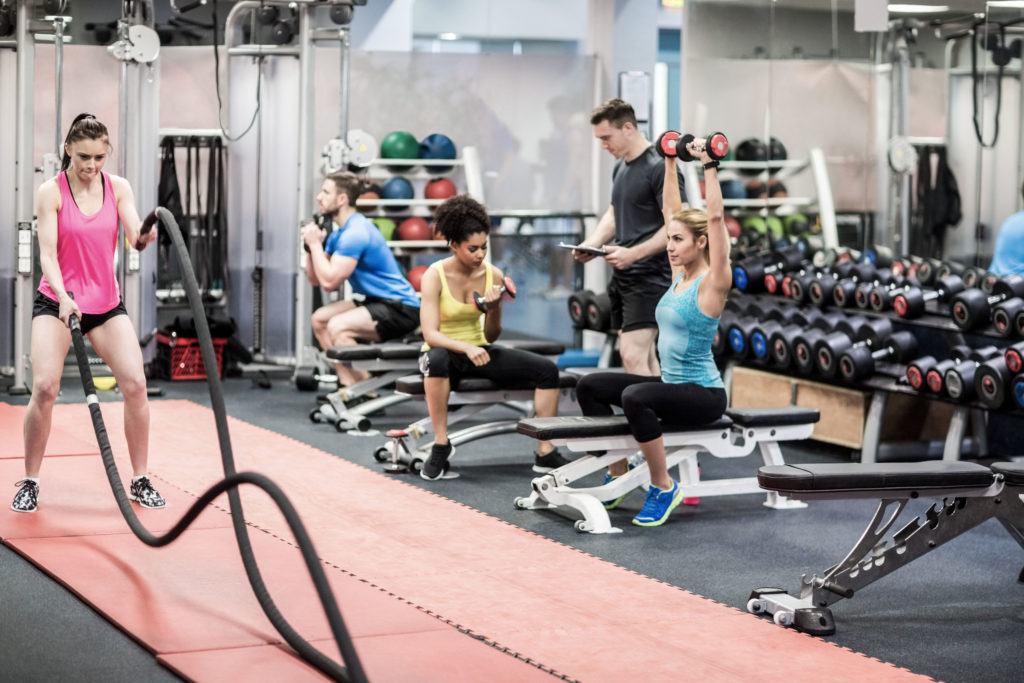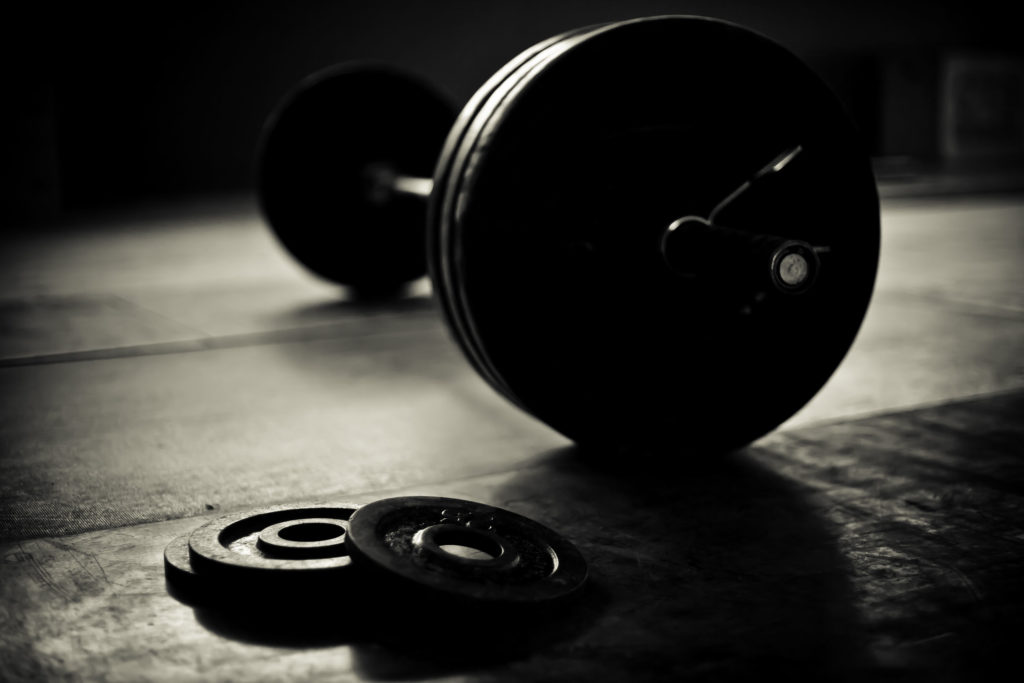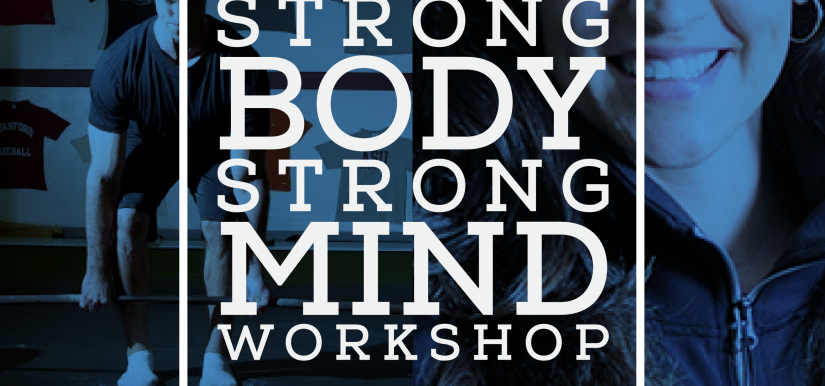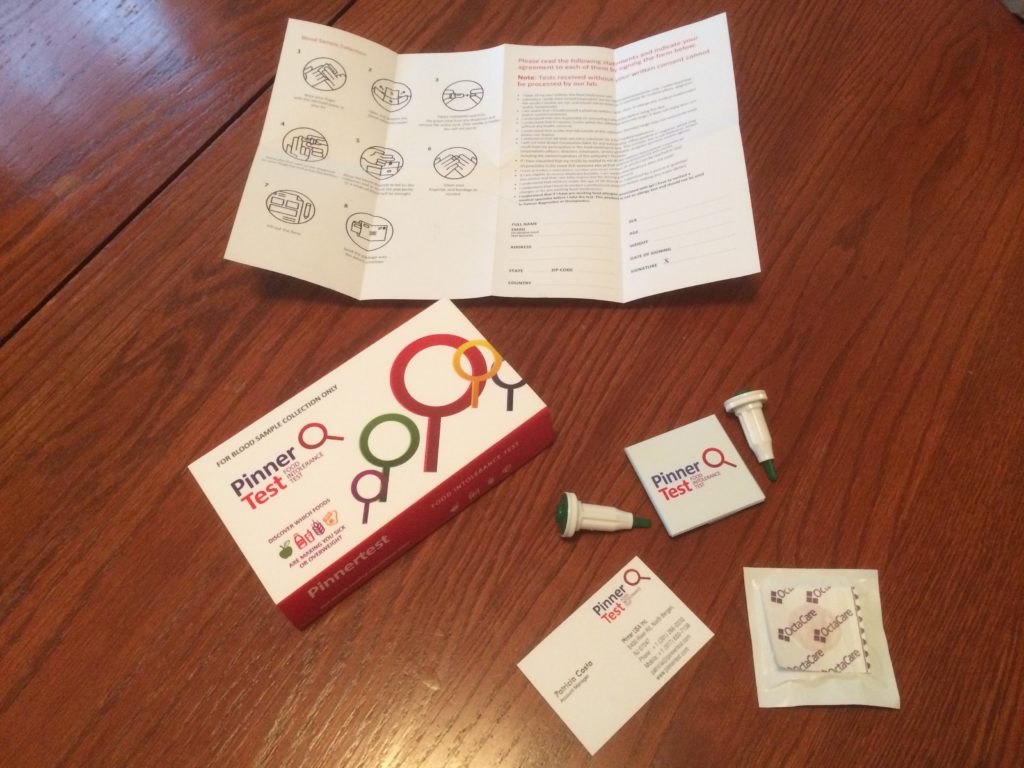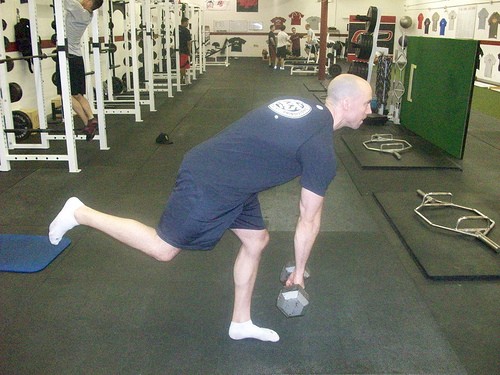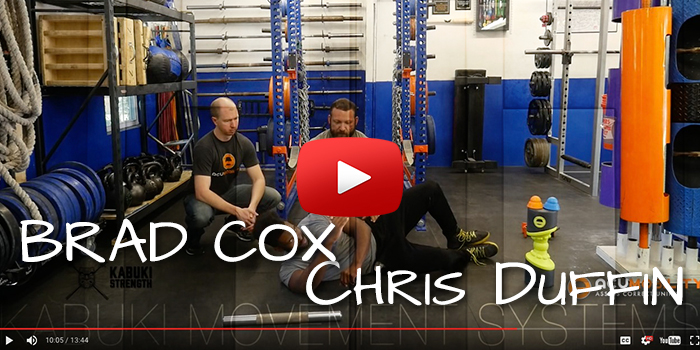With more and more personal trainers entering the industry faster than Marvel and DC Comics can resurrect D-list characters to put into their movies1, it’s becoming more readily apparent how ill-prepared some (not all) are when it comes to writing effective training programs.
Today’s guest post, courtesy of Tennessee-based coach, Andy van Grinsven, helps to shed some light on the topic and remedy the situation. Enjoy.
Program Design Considerations For the New Personal Trainer: What You’re Missing
Copyright: dolgachov / 123RF Stock Photo
It’s five after, and my client is running late. Like an owl I spin my head round and round checking first the door, then the suspiciously empty squat rack, and back to the door, tapping my clip board with feverish anxiety.
My client arrives. “Hey there! How was your weekend? Ready to get started?” Like Fred Jones I wave of my arm as if to say “come on, gang!” I’m listening to my client while trying to break the speed-walking world record on my way to the rack.
Then it happens. Like a swarm of vultures a group of teenagers snag the only squat rack in the gym. Nut punch. Now what?
Personal trainers and coaches pride themselves in their ability to write programs: sets and reps, rest periods, organization, periodization, and all the other details that make a program, a program. And at the end of the day, we hope this program turns our clients into card-carrying certified badasses.
Copyright: dolgachov / 123RF Stock Photo
But here’s the thing:
Any trainer worth his weekend certification can put together a program. It’s not that hard: pick some exercises, assign some stuff to them, and voila! You’re a coach.
But what happens when you actually hit the trenches and start training these clients? Does your program actually work? Does it fit the context of the gym and client? Does it make them better?
I’ve been training, largely in community gyms, for the better part of 7 years. I’ve written countless programs. However, the number of times I’ve been able to execute a program 100% as written is likely less than 10.
Why?
Because when life throws you a bunch of teenagers in the squat rack, you make do with what you’ve got left (after cursing the Gods, and maybe, crop-dusting them).
Suddenly, your perfect program gets shot down because the equipment you needed is occupied.
Or your client just got back from a 2-week vacation. Or your client slept poorly. Or they stayed up late watching Friends reruns.
Your program means nothing if it can’t roll with the punches.
Exercise selection, sets, reps, and rest periods are great. But there’s a few things you ought to consider along with the meat and potatoes of your program:
Program Design Considerations: What Your Certification Course Forgot to Mention
1.) WHO is your client?
Are they an athlete? Are they a bodybuilder? Powerlifter? Or just some regular Joe trying to lose
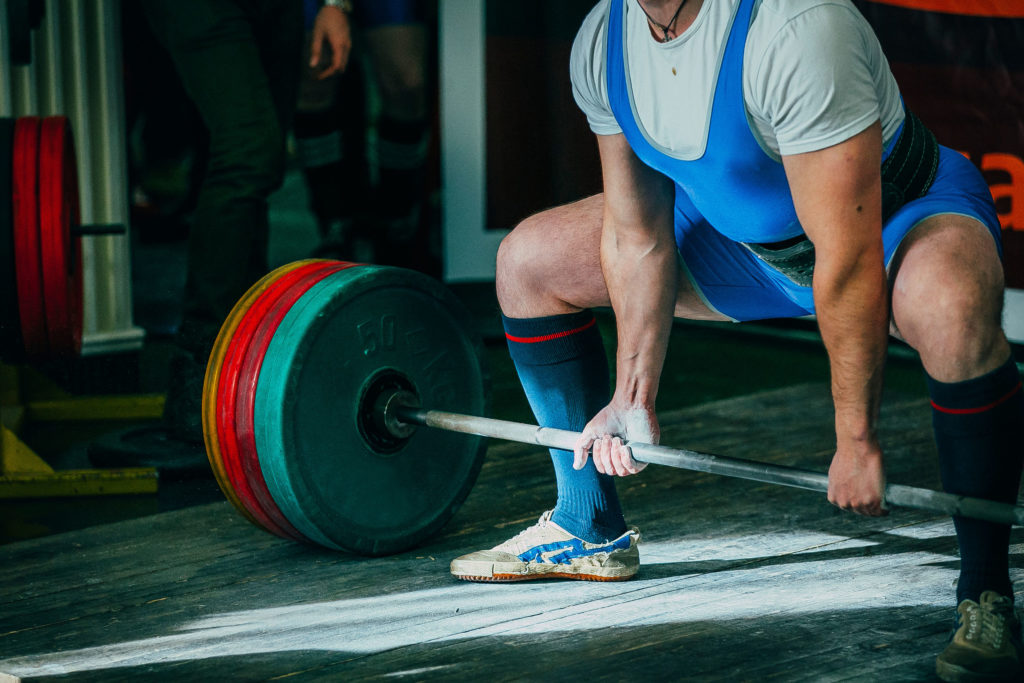
belly fat?
This question might sound silly, but you may be surprised to see many coaches and trainers blindly fit all their clients to one style of training:
Powerlifters like the “Big 3,” so every client is barbell benching, squatting, and deadlifting.
Bodybuilders chase max muscle, and often write programs with titles like “chest day” or “leg day.”
This is, of course, appropriate, if the client is a powerlifter or bodybuilder. But what if they’re not? How do you write a program for the regular Joe?
Do both styles of training, and the tools they prefer, have a place in your program? (<–the answer is probably, yes)
2.) What’s Important?
You’ve got your exhaustive list of exercises: squat variations, different hand position, barbells, TRX, medicine balls, boxes, and the list goes on.
In this crazy world of fitness and exercises, which ones are most important for your client? What do you choose, and how do you implement them?
Develop your own “10 Most Important Things” list. This list will serve as the foundation for your program design.
Here are my 10 Most Important Things (in no particular order):
- Squat
- Hip Hinge
- Push-ups
- Chin-ups
- Lunge
- Row
- Carry
- “Power movement”
- Crawl
- Anti-movements (planks, Pallof presses, etc.)
For me, these 10 represent the most important things I need to coach all my clients. The style of squat; the type of hip hinge; how many push-ups they can do; and the “power movement” will all differ client-to-client, but they’re all things my clients will do with me. If I’ve covered these 10 things, we’re going to be in good shape for both the gym and life.
If you must leave your client with only 10 things, what would they be?
3.) What Are the Client’s Goals?
I get it: squatting is a ton is fun. Being super strong is awesome. But does your client want to squat a metric shit-load? Do they even know if they do or don’t? Further, how strong is “strong enough?”
Remember: you’re in business to help your client. If being as strong as humanly possible is their goal, then get after it. If not, reassess “why” you’re designing your program to include heavy squat sessions. They might not be appropriate for this client, or many of your others.
Now before you go writing me off as some soft coach, hear me out: I agree that everyone needs to be “strong.” Helping your client get stronger is helping them build muscle, boost confidence, and reduce their risk of injury.
But, how we get them stronger is through progressive overload, not necessarily the tool: dumbbells, barbells, and TRX each provide a stimulus to help your client get stronger.
I encourage you to evaluate how you define strong and evaluate the methods you use to make your clients strong.
Sometimes, a goblet squat is all you’re ever going to need.
4.) What Does Your Client Need?
You’ve established the client’s goals: shed body fat, get stronger, and look great naked again.
What if your client wants to squat a brick shit-house, but can’t squat to parallel with body weight?
Maybe they want to run next year’s full marathon, but they’re carrying an extra 50 pounds of fat.
Get your clients to their goals, but assess their needs along the way. If they have the body awareness of a 2-year old and joint mobility that would make the Tin Man cringe, we’ve got some work to do first.
Whether these things pan out during your first few sessions or are discovered through your screen is up to you, but make sure you’re using the safest and most effective methods for their abilities right now, and not where they think they are.
5.) What CAN You Do?
It’s not what you want to do, it’s what you can do.
There have been numerous times I’ve walked into the gym, program in hand, and had to make adjustments, X-out exercises, and switch my order.
Why? The teenagers in the squat rack. My client didn’t sleep well. The lat-pulldown is out for maintenance.
What are you going to do now?
1. Roll with it
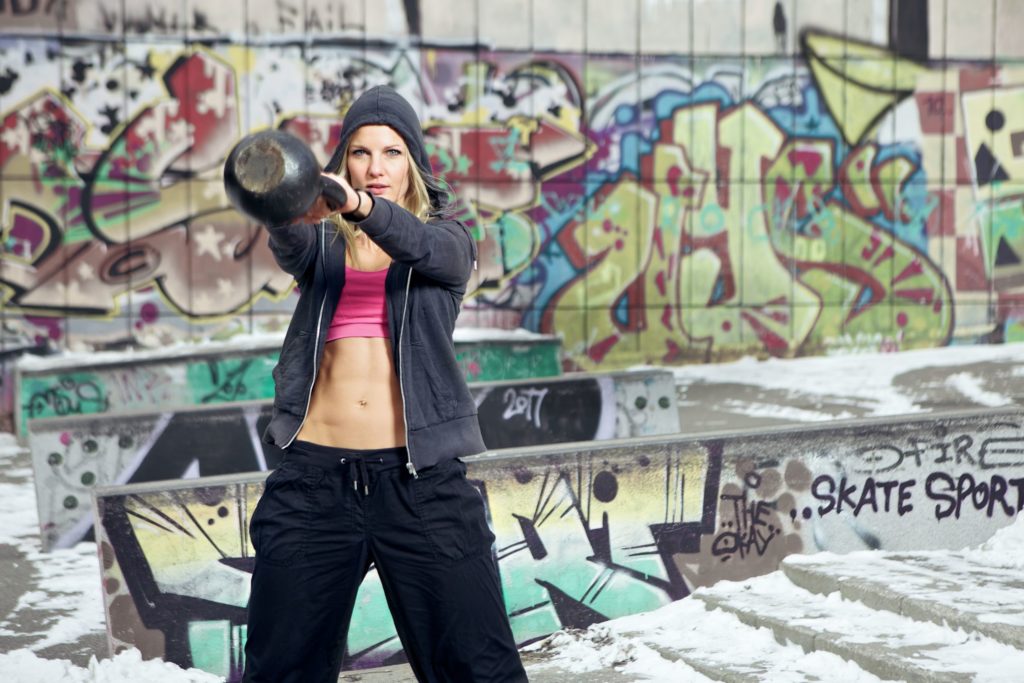
I’m all for program writing and I love the enthusiasm but have progressions, regressions, and other options that can get the job done.
For most everyone, like 99% of the people you’re going to work with, it won’t matter whether you squat them with a bar, dumbbell, or kettlebell. It won’t matter if your hip hinge movement is KB swings instead of deadlifts. It won’t matter if you choose to do push-ups over DB presses.
All that will matter is that you’ve provided a stimulus and a fun training experience.
Why? Because good, hard work, trumps no work at all. And in the grand scheme of things, most of your clients just want to move well and feel well, get a good workout in, and be on their way.
2. Assess Readiness
Many coaches, many smarter and more experienced than I, will use Heart Rate Variability or some other tool to assess “readiness” of the client or athlete before the training sessions starts.
If you have the tools and like to use them, great. If not, borrow my “RPF,” or 0-10 Rating of Perceived Feels scale:
A zero (0) on the scale roughly means “Andy, I’d rather throat punch you than work out today.”
Ok. No problem. Maybe we’ll de-load or reduce the volume on some things.
A 10 on the scale roughly means “Andy, I’d like to fight Superman today.” Great! Let’s get after it: slap on more weight; more sets; and more intensity.
Your 0-10 might mean different things to you and your client, but make it fun and relatable. At the very least, you’ll get a laugh out of them with the silliness.
My RPF scale is a simple, subjective tool that gives you an idea of the state your client is in before you start hitting the weights. Make changes accordingly.
Conclusion
Writing a program doesn’t have to be complicated, however, these are considerations most don’t take into account when designing a program.
It’s easy to jot down the program that *you* would want to do, but is it appropriate for the client? Is it appropriate for the context of the gym and client’s goals?
Answer these questions before you even sit down to write the program, and have progressions, regressions, and built-in flexibility with your exercise selection.
If you can do that, I promise you’ll write better programs and rarely run into trouble.
About the Author
Andy is a personal trainer and strength coach based in Nashville, TN. He likes deadlifting, coffee, and BBQ. His clients range from college age to retirement, but the message is still the same: lift safely and progressively, then rule the world. You can find him on Facebook and Instagram, or on his website HERE.

